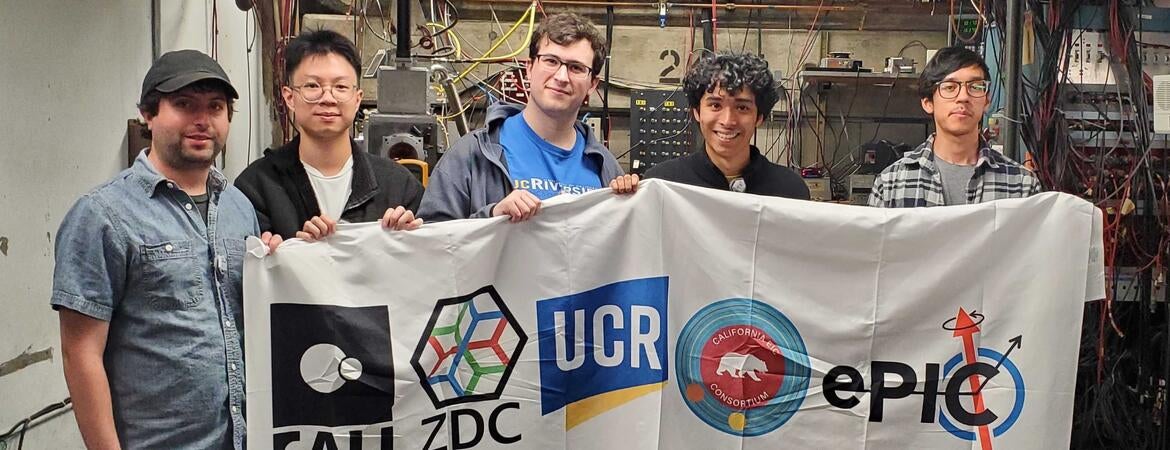
Recently, a team of UC Riverside physicists led an experimental campaign at UC Davis, where they worked on a cyclotron, an apparatus that accelerates charged particles. The team, led by Barak Schmookler, an assistant project scientist in the lab of Miguel Arratia, an assistant professor of physics and astronomy, bombarded photosensors with proton beams from the cyclotron, causing degradation due to “radiation damage.”
“This exercise provides crucial reference data to study how sensors and electronics will tolerate radiation from the future Electron-Ion Collider,” Arratia said. “The team from my lab, including undergraduate students, gained valuable hands-on experience. This type of testing is common in the aerospace industry, such as for satellites, where radiation damage is a significant issue.”
The Electron-Ion Collider, or EIC, at Brookhaven National Laboratory in New York will aim to study the properties of the proton and produce its first ever 3D image.
The UC Davis Cyclotron can accelerate protons to a kinetic energy of 64 million Electronvolts. It has a diameter of 76 inches (about 6 feet). In a cyclotron a charged particle is accelerated by an electric field and then bent by a magnetic field, which makes the particle travel in a spiral as its energy increases. Once a beam of these particles reaches maximum energy, the beam can be transferred by magnets to another location.
The UCR team performed various tests, sponsored by the EIC project and planned and coordinated by UCR, at the UC Davis Cyclotron. According to Arratia, more dedicated measurements will continue at UCR campus laboratories. The team is working to characterize the effect of radiation on the performance of silicon photomultipliers, or SiPMs.
“These SiPM detectors will be used at the future EIC in the context of, for example, to read out the signal from calorimeter detectors,” Schmookler said.
Schmookler explained that calorimeters are used to absorb a high-energy particle and determine its energy. A portion of this absorbed energy is converted to light, he said, and some of that light is detected by SiPMs attached to the calorimeter.
“The SiPM signal tells us the energy of the particle that hits the calorimeter,” he said.
The team is still running post-radiation tests on the SiPMs. It also plans to study the effect of heating the irradiated SIPMs to high temperatures.
Besides Schmookler, members of the team are undergraduate students Ryan Tsiao and Miguel Rodriguez, and graduate students Sean Preins and JiaJun Huang.
Header image shows, from L to R, Barak Schmookler, JiaJun Huang, Sean Preins, Ryan Tsiao, and Miguel Rodriguez. (UCR/Arratia lab)
